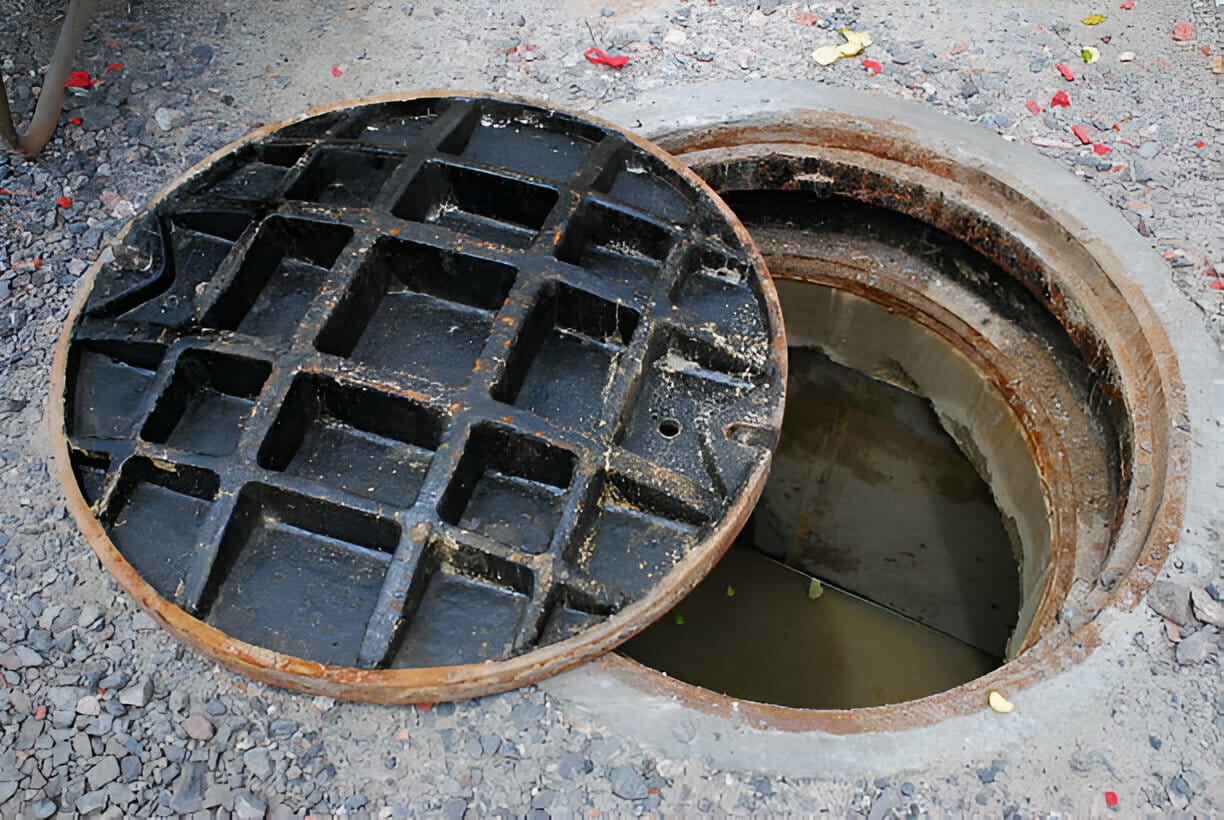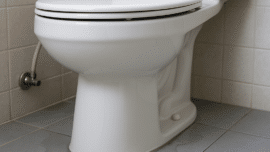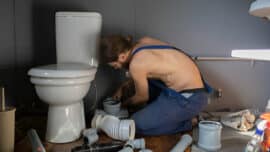
How Do You Clear Blocked Drains?
Confronting blocked drains is a common issue for many homeowners, that often leads to needing emergency plumbing. Not only does it disrupt daily activities, but it can also pose significant health risks and cause damage to property if not addressed promptly and effectively. Understanding the root causes and solutions for blocked sewers and drains is crucial for maintaining a sanitary home environment. Below, we’ll offer you insights and practical solutions to tackle these challenges, ensuring your home’s plumbing operates efficiently.
In this article, we will guide you through identifying a blocked drain, measures to prevent them, and DIY solutions that can help you unblock drains without the immediate need for emergency plumbing services. By familiarising yourself with these essential aspects, you will be better equipped to manage and prevent the occurrence of blocked sewers, saving you time and the expense of emergency interventions. We’ll also give you the knowledge and skills to maintain your drainage system effectively, ensuring a clean and healthy living space for you and your family.
Identifying a Blocked Drain
Bad Odours
If you encounter unpleasant smells emanating from your drains, it’s a strong indicator of a blocked drain. Organic matter, such as food particles and grease, can accumulate and decompose, leading to unpleasant smells.
Slow Drainage
Noticing that water takes longer to drain in your sinks, bathtubs, or showers can signal a blockage. This slow drainage is typically caused by the buildup of materials like hair, soap scum, or grease obstructing water flow.
Water Backups
One of the most obvious signs of a blocked drain is water backing up out of sinks, toilets, or showers. This happens when the water, unable to pass through a blockage, finds alternative paths in your plumbing system.
Unusual Sounds
Gurgling or bubbling noises from your drains can be a sign of a blockage. These sounds occur as trapped air escapes past the blockage, indicating that it’s time to check your pipes.
Preventing Blocked Drains
To prevent blocked drains effectively, it’s crucial to adopt certain practices and modifications around the house. Here are some strategies:
Proper Disposal of Toiletries
Toiletries such as wet wipes, sanitary products, and excess toilet paper can quickly clog pipes. Always dispose of these items in the bin instead of flushing them down the toilet. Installing reminder signs in bathrooms can help guests and children remember these guidelines.
Avoiding Grease Down the Sink
Grease is a major culprit in kitchen sink blockages. Avoid pouring fats, oils, or any greasy substances down the drain. Instead, collect grease in a container and dispose of it in the trash. Using hot water to dissolve grease is ineffective as it solidifies in the pipes, causing clogs.
Regular Cleaning
Maintain clean drains by regularly flushing them with a mixture of baking soda, vinegar, and hot water. This not only prevents grease build-up but also deodorises the drains. Additionally, clean drain stoppers in sinks and tubs to remove hair and soap scum which could lead to blockages.
Using Drain Covers
Install drain covers in showers, sinks, and kitchen drains to catch debris, hair, and food particles. Regularly inspect and clean these covers to ensure they remain effective in preventing larger debris from entering the drainage system, thus maintaining an efficient flow of water.
By incorporating these practices, you can significantly reduce the risk of experiencing blocked drains and ensure a smoothly functioning plumbing system in your home.
DIY Solutions to Unblock Drains
Baking Soda and Vinegar
Begin by pouring a pot of boiling water down the drain to soften the clog. Follow this with half a cup of baking soda and an equal mixture of water and vinegar. Cover the drain to allow the chemical reaction to work on the clog. After 5 to 10 minutes, flush the drain with another pot of boiling water to clear out the loosened debris.
Hot Water Pour
For grease-related clogs, boiling water can be particularly effective. Boil water and carefully pour it down the drain. This method is suitable for metal or ceramic pipes but should be avoided with PVC pipes due to the risk of damage from the heat.
Manual Auger
Insert a manual auger, also known as a drain snake, into the blocked drain and turn the handle to extend the auger into the clog. Once resistance is felt, manoeuvre the auger to break apart the blockage. Carefully retract the auger, checking for any debris that might be attached.
Rubber Plunger Techniques
Use a plunger to address blockages by creating a seal over the drain and moving the plunger up and down to generate pressure that dislodges the clog. Ensure the plunger is submerged in water to create effective suction and repeat the plunging action until the blockage clears.
By employing these DIY techniques, most common drain blockages can be effectively managed without the need for professional plumbing services.
We’ve navigated the complexities of identifying, preventing, and addressing blocked drains, equipping you with essential knowledge and practical solutions to maintain a healthy drainage system. From recognizing the early signs of blockages, such as bad smells and slow drainage, to implementing daily preventative measures and employing effective DIY solutions, this guide serves as a cornerstone for homeowners seeking to preserve their property’s plumbing. Remember, while some remedies can provide immediate relief, prevention is key to avoiding future disruptions.
In scenarios where DIY solutions fall short, or if you prefer a professional touch to ensure your drains are thoroughly cleared and maintained, reaching out to experienced professionals like South East Plumbing Engadine can provide peace of mind and guarantee a long-term solution. This actionable approach not only secures your home’s plumbing health but also mitigates potential health risks and property damage associated with blocked drains. By embracing both preventative measures and reliable professional assistance, maintaining a clean and efficient home environment becomes an achievable reality.
FAQs
1. What methods can be used to unclog a severely blocked drain?
To unclog a severely blocked drain, start by pouring a pot of boiling water down the drain. Then, add a cup of baking soda followed by a mixture of one cup of water and one of vinegar. Cover the drain with a plug and let it sit for about 5 to 10 minutes before flushing with more boiling water.
2. What is an effective homemade solution for unclogging drains?
An effective homemade solution to unclog drains involves pouring boiling water down the drain initially. Follow this by adding a half cup of baking soda and then a half cup of white vinegar. Cover the drain to allow the mixture to react for about 15 to 20 minutes, then rinse the drain with hot water for two to three minutes to clear the mixture and any loosened debris.
3. Why is it advised against using baking soda and vinegar to unclog drains?
Using baking soda and vinegar to unclog drains is not recommended because the combination is not strong enough to effectively break down major clogs. Additionally, it can damage rubber seals within the plumbing and corrode older pipes, potentially causing more harm than good.



